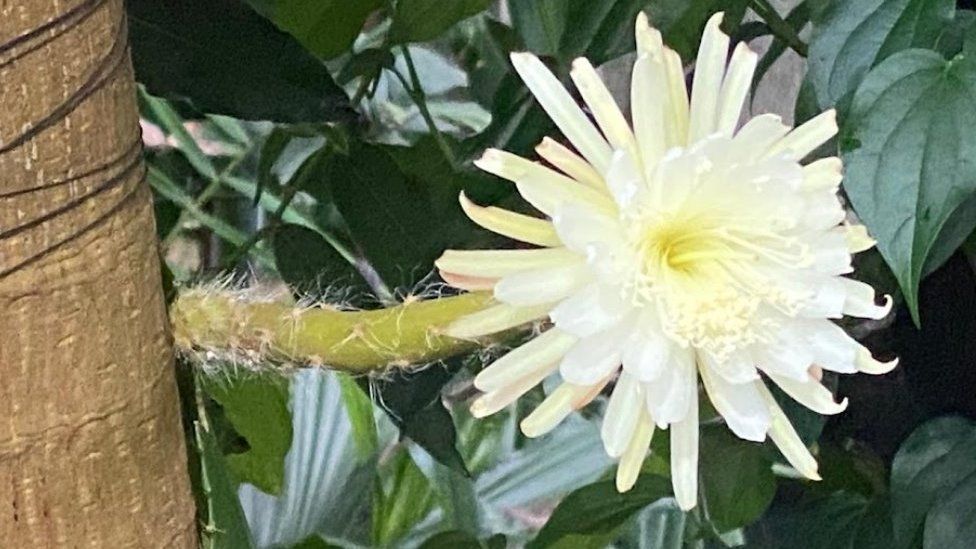Second Cambridge moonflower blooms for lucky visitors
- Published

A second flower on a rare Amazonian cactus that blooms only once a year appeared to the delight of visitors on Sunday.
The moonflower, or Strophocactus wittii, is part of the collection at Cambridge University Botanic Garden.
It is "rare" that they bloom in captivity but this year the plant has produced two flowers and a third one is expected by the end of the week.
The latest one appeared at 13:00 GMT and true to form, died within 12 hours.
When the first of the plant's blooms came out in February 2021 it was believed to be the first time one had flowered in the UK, and was watched by about 500,000 people via a webcam.
The plant excited staff at the garden this year by producing not just one, but four potential blooms - a number believed to be a first for the cactus in cultivation in the UK.
However, the fourth bud was damaged and died.
Senior horticulturist at the garden, Kathryn Bray, said while the flowers were referred to as moonflowers because they usually came out at sunset and die by sunrise, this year the ones in the Botanic Garden came out shortly after 13:00 each time.
Visitors snaked around the garden queuing to get a glimpse of the second flower when news of its impending blooming was announced on X, formerly known as Twitter, on Sunday.
The plant's progress is being monitored via a webcam and the final bud was expected to come out later this week.
The garden's glasshouse is open to the public until 16:30 if people wish to see it for themselves.
While the moonflower is not rare in the wild, it is rare in cultivation, a garden spokesperson said.
This species of Strophocactus is grown in 30 botanic gardens worldwide and its beauty is short-lived, as flowers start to die after just 12 hours.
They are keen to point out that their plant is not the same as other flowering cacti which have the same common name of moonflower.
"The name moonflower is given to a lot of cacti which people often have flowering at home," Ms Bray said.
"This plant - Strophocactus wittii - is definitely rare in the UK and in botanic gardens in general, outside its native habitat in the Amazon, so it's important to always go by the Latin name."
Follow East of England news on Facebook, Instagram and X. Got a story? Email [email protected] or WhatsApp 0800 169 1830
- Published1 February
- Published19 March 2023
- Published13 March 2023
- Published20 February 2021
- Published20 February 2021